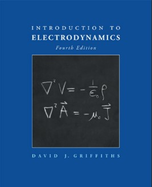Solution Found!
A certain transmission line is constructed from two thin
Chapter 7, Problem 62P(choose chapter or problem)
Problem 62P
A certain transmission line is constructed from two thin metal “ribbons,” of width w, a very small distance apart. The current travels down one strip and back along the other. In each case, it spreads out uniformly over the surface of the ribbon.
(a) Find the capacitance per unit length, C.
(b) Find the inductance per unit length, L.
(c) What is the product LC, numerically? [L and C will, of course, vary from one kind of transmission line to another, but their product is a universal constant— check, for example, the cable in Ex. 7.13—provided the space between the conductors is a vacuum. In the theory of transmission lines, this product is related to the speed with which a pulse propagates down the line:
(d) If the strips are insulated from one another by a nonconducting material of permittivity ? and permeability μ, what then is the product LC?What is the propagation speed? [Hint: see Ex. 4.6; by what factor does L change when an inductor is immersed in linear material of permeability μ?]
Questions & Answers
QUESTION:
Problem 62P
A certain transmission line is constructed from two thin metal “ribbons,” of width w, a very small distance apart. The current travels down one strip and back along the other. In each case, it spreads out uniformly over the surface of the ribbon.
(a) Find the capacitance per unit length, C.
(b) Find the inductance per unit length, L.
(c) What is the product LC, numerically? [L and C will, of course, vary from one kind of transmission line to another, but their product is a universal constant— check, for example, the cable in Ex. 7.13—provided the space between the conductors is a vacuum. In the theory of transmission lines, this product is related to the speed with which a pulse propagates down the line:
(d) If the strips are insulated from one another by a nonconducting material of permittivity ? and permeability μ, what then is the product LC?What is the propagation speed? [Hint: see Ex. 4.6; by what factor does L change when an inductor is immersed in linear material of permeability μ?]
ANSWER:
Solution 62P
Part (a)
Step 1 of 7:
Consider two parallel metal ribbons are separated a small distance h. The width of the ribbon is w and length may be l. The direction of the currents on the two ribbons is opposite to one another. The current spread out uniformly over the surface. We are going to find the capacitance per unit length of the metal.
The arrangement is like a parallel plate capacitor. The electric field inside the parallel plates is expressed as
Where 𝜎 is the charge density
εo is the permittivity of free space ()
The potential difference between the plates separated by a distance h is
Putting (1) in (2)
